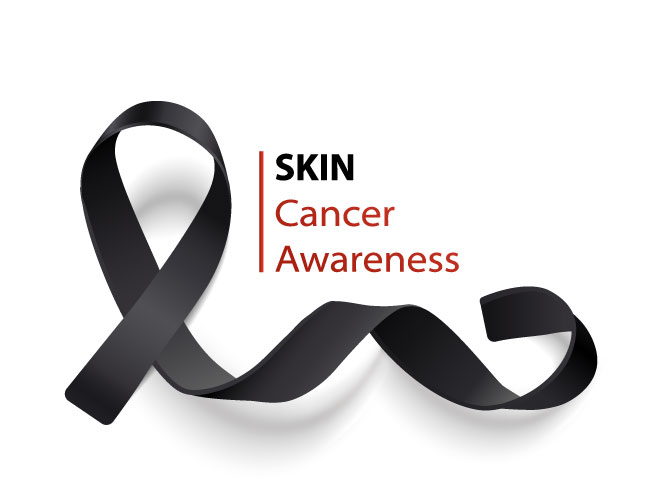Skin cancers are the most common cancers in the United States, which is why skin cancer awareness and prevention are so important. More people are diagnosed each year with skin cancer than all other cancers combined, with 1 in 5 Americans being diagnosed with skin cancer by age 70.
There are two categories of skin cancers, keratinocytic and melanocytic. Keratinocytic skin cancers are basal cell carcinoma and squamous cell carcinoma. Melanocytic skin cancers are called melanoma. Basal cell carcinoma is the most common type of skin cancer followed by squamous cell carcinoma and then melanoma. More than 15,000 people die each year from squamous cell carcinoma, twice as many as from melanoma.
Sun exposure, specifically UV sunlight, increases the risk of all skin cancers. About 90% of keratinocytic skin cancers are associated with UV radiation exposure while 86% of melanomas are related to UV radiation exposure. The risk for melanoma doubles if the individual has had more than five sunburns over their lifetime, but just one blistering sunburn in childhood or adolescence more than doubles a person’s risk over their lifetime. Indoor tanning devices emit UV radiation in amounts 10-15 times higher than the sun at peak intensity. People that use tanning devices before age 35 increase their risk of melanoma by 75% and those who have ever used tanning devices have an 83% higher risk of squamous cell carcinoma.
Prevention starts with reducing exposure to UV radiation using physical blocking strategies as well as protecting your skin when exposed with a broad-spectrum sunscreen which protects against both UVA and UVB radiation. SPF rates the degree of protection from UVB radiation. The number indicates the magnitude of time that it takes to redden the skin compared to using no sunscreen. For example, an SPF 30 means it takes 30 times longer to redden the skin than without the sunscreen. Higher SPF products are only marginally better, for example, an SPF 30 blocks 97% of UV radiation, SPF 50 blocks 98%, and SPF 100 blocks 99%.
Early detection of skin cancer is important as the survival rate for early melanoma is 99% compared to only 25% for late-stage melanoma. Patients should report any rapidly changing, bleeding, or oddly colored moles or skin lesions to their doctor. Diagnostic accuracy can be improved using dermoscopy which is a magnified pattern analysis technique aided by polarized and nonpolarized light. Many primary care offices and most dermatology offices now incorporate this technique into their skin cancer screening.
Treatment for skin cancers depends on the type and stage. In most cases, early-stage skin cancers that are surgically removed have almost a 100% cure rate. Other treatment strategies including topical medications, cryotherapy, photodynamic therapy, and curetting can be used for superficial keratinocytic skin cancers with good success.
Remember to talk to your doctor about any skin cancer concerns. Patients at higher than average risk should be seen at least once a year for a complete skin check. Our office provides both skin cancer screening and treatment as well as referrals to specialty surgical dermatologist when needed. Contact us today to discuss skin cancer awareness and prevention.

